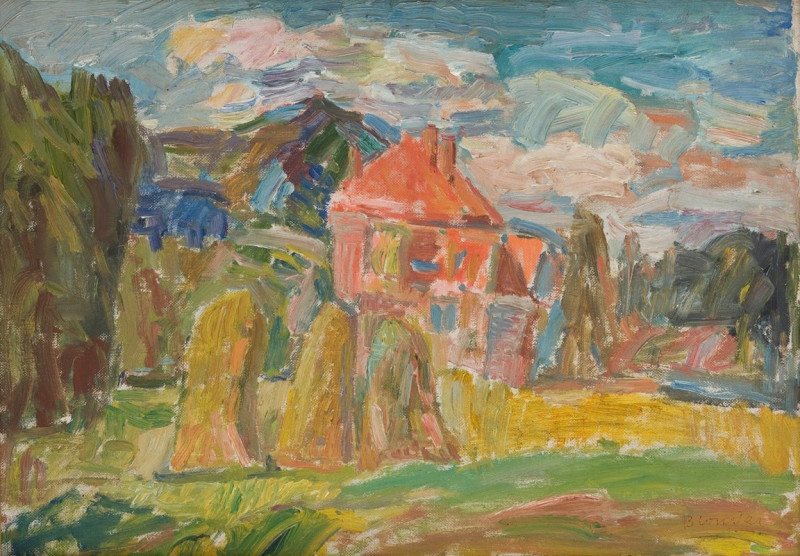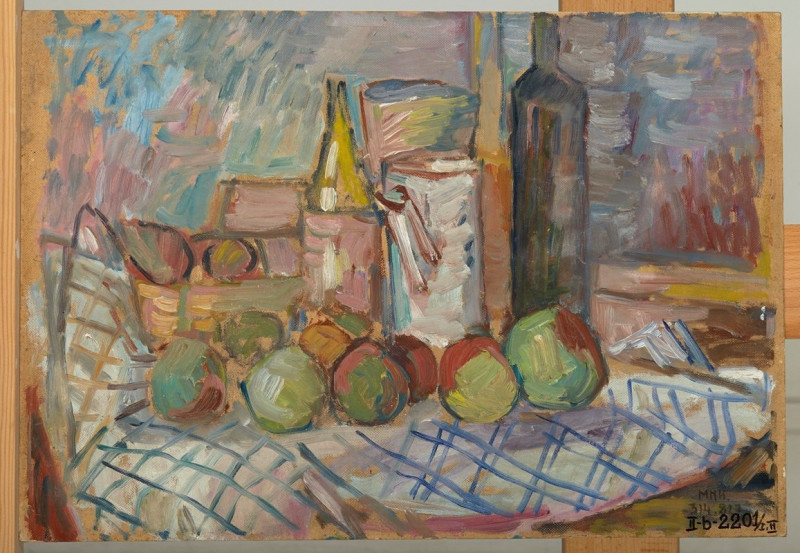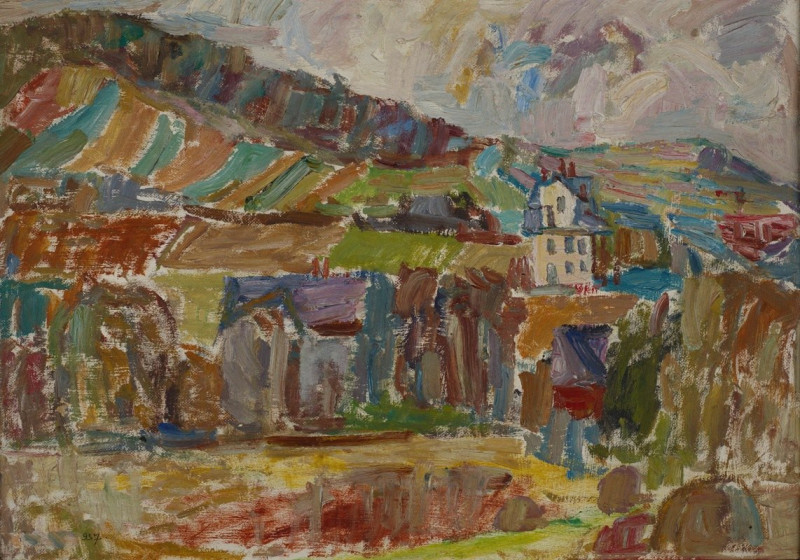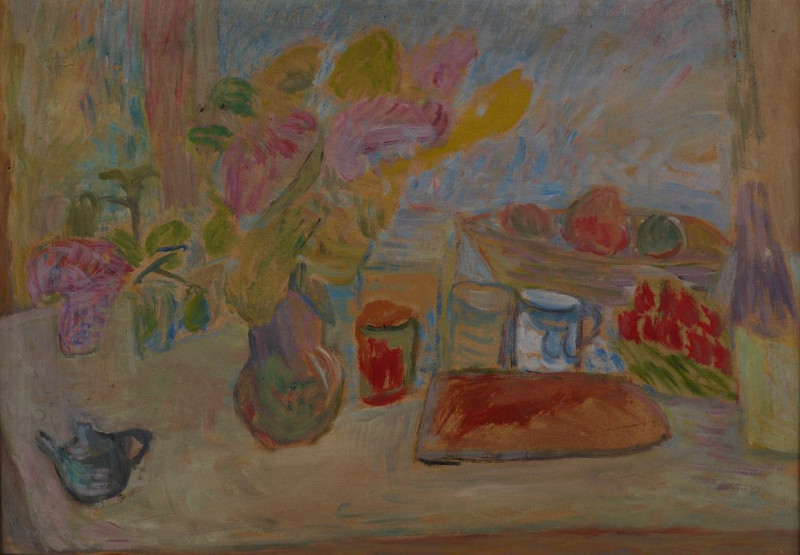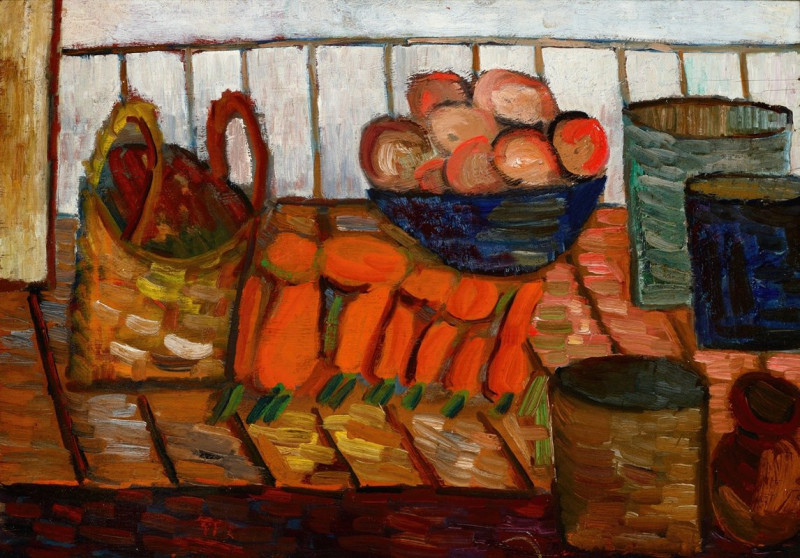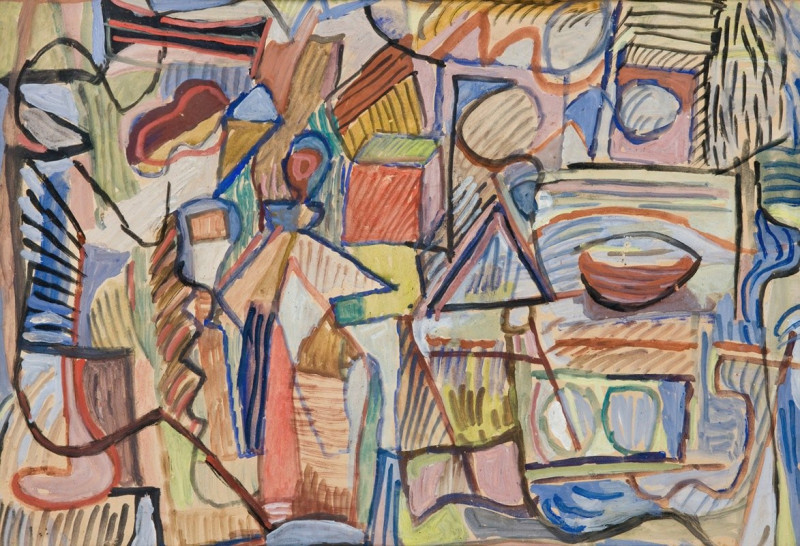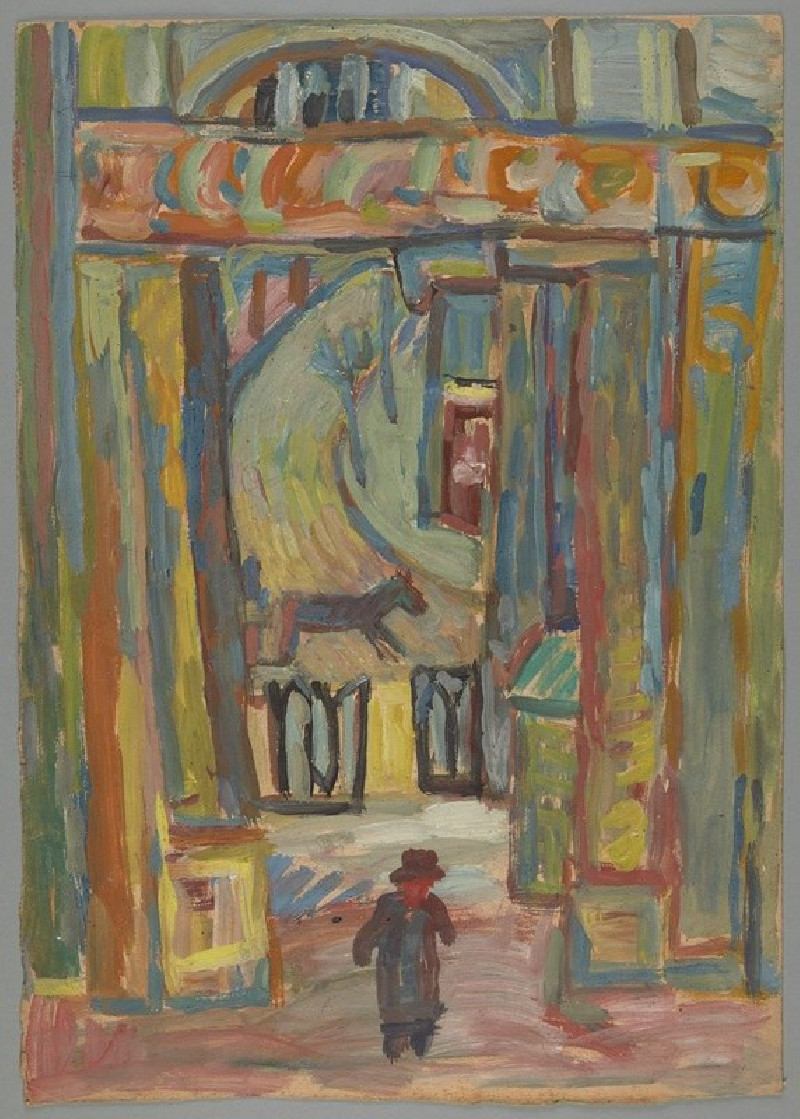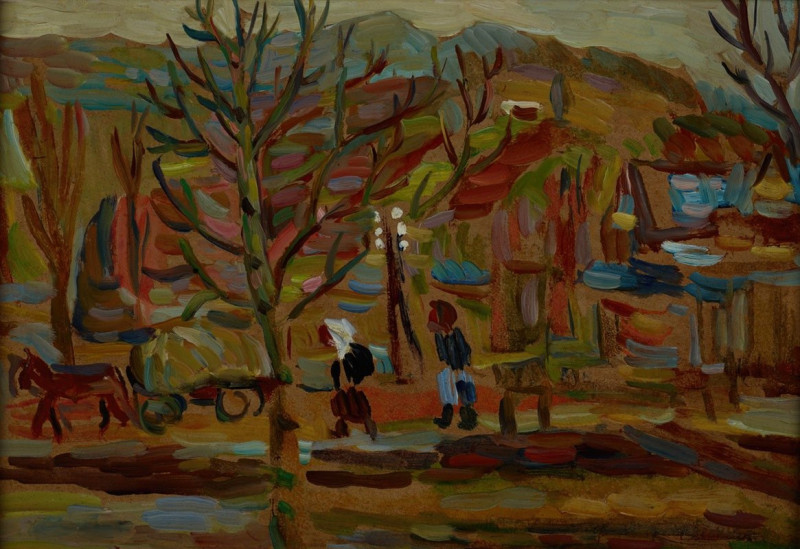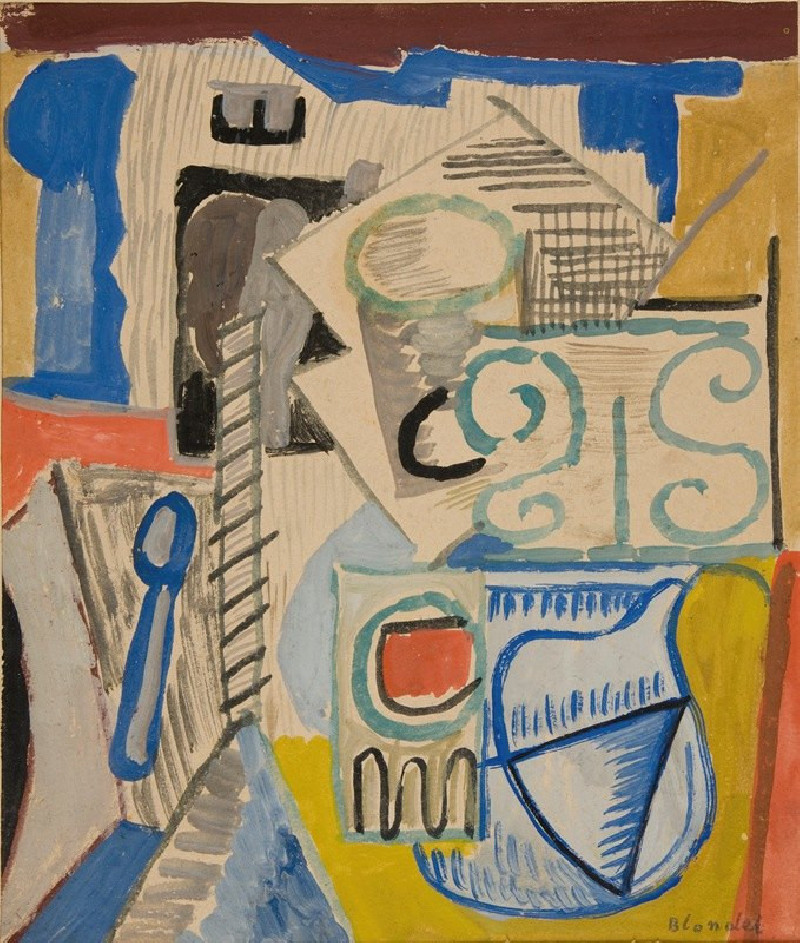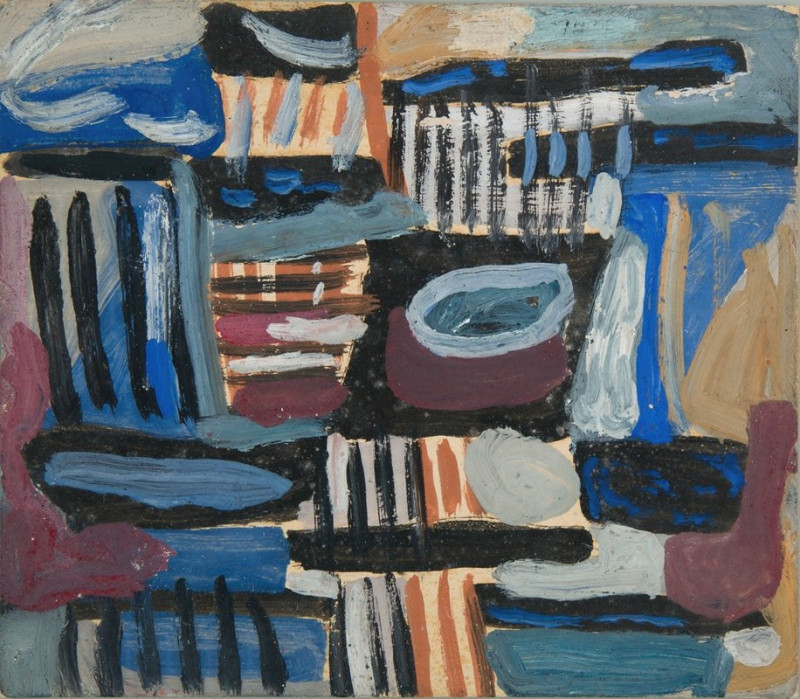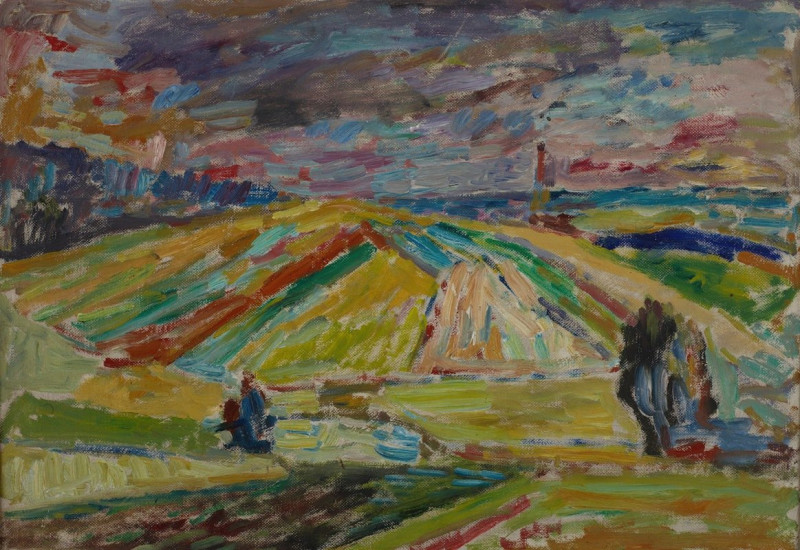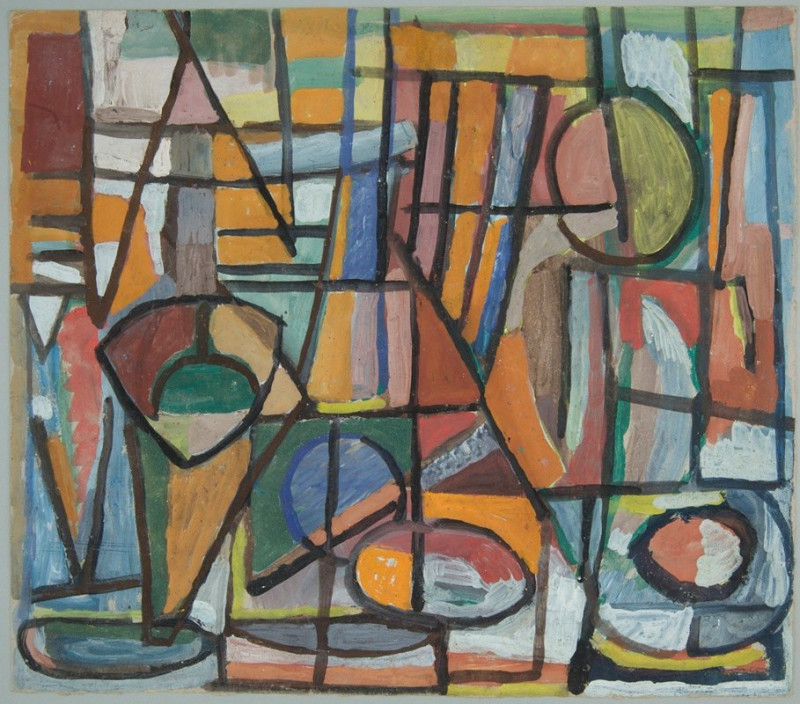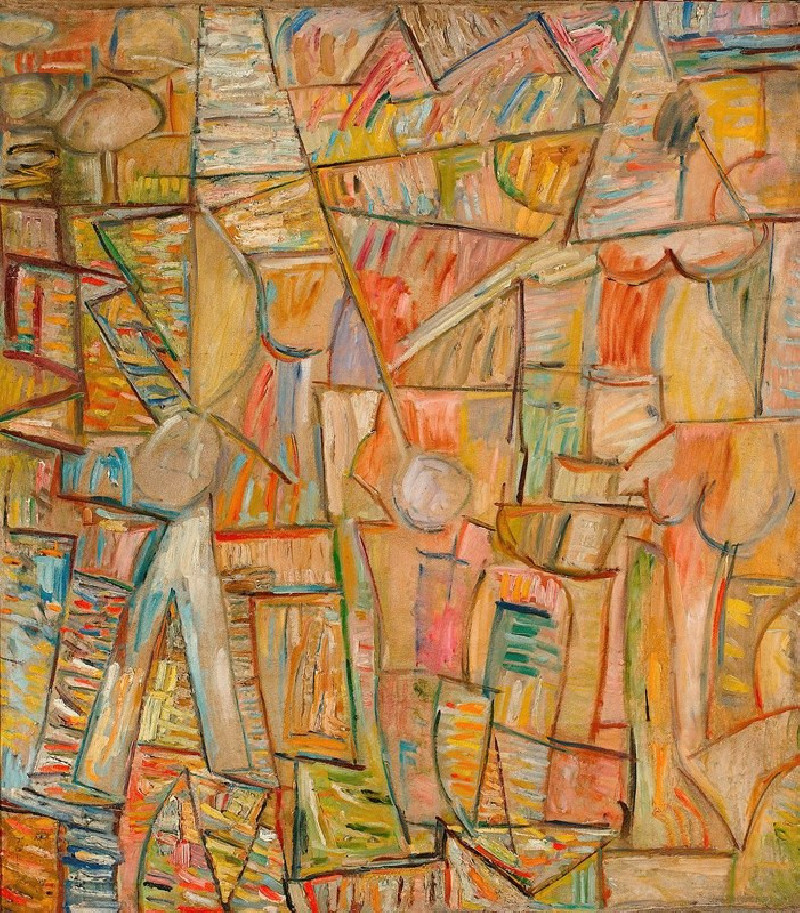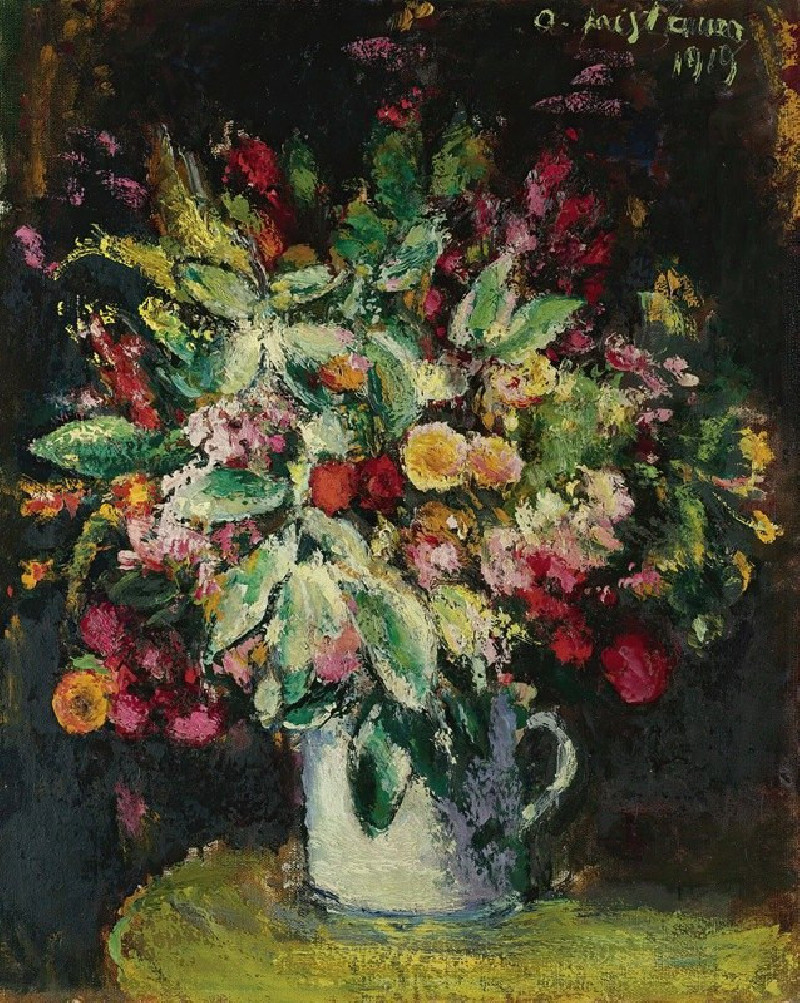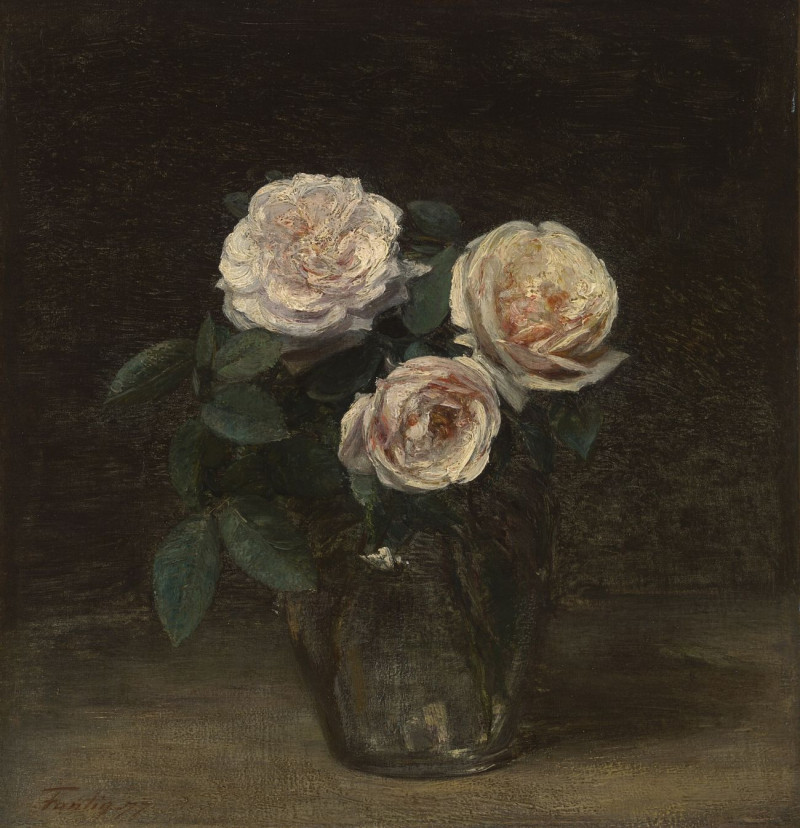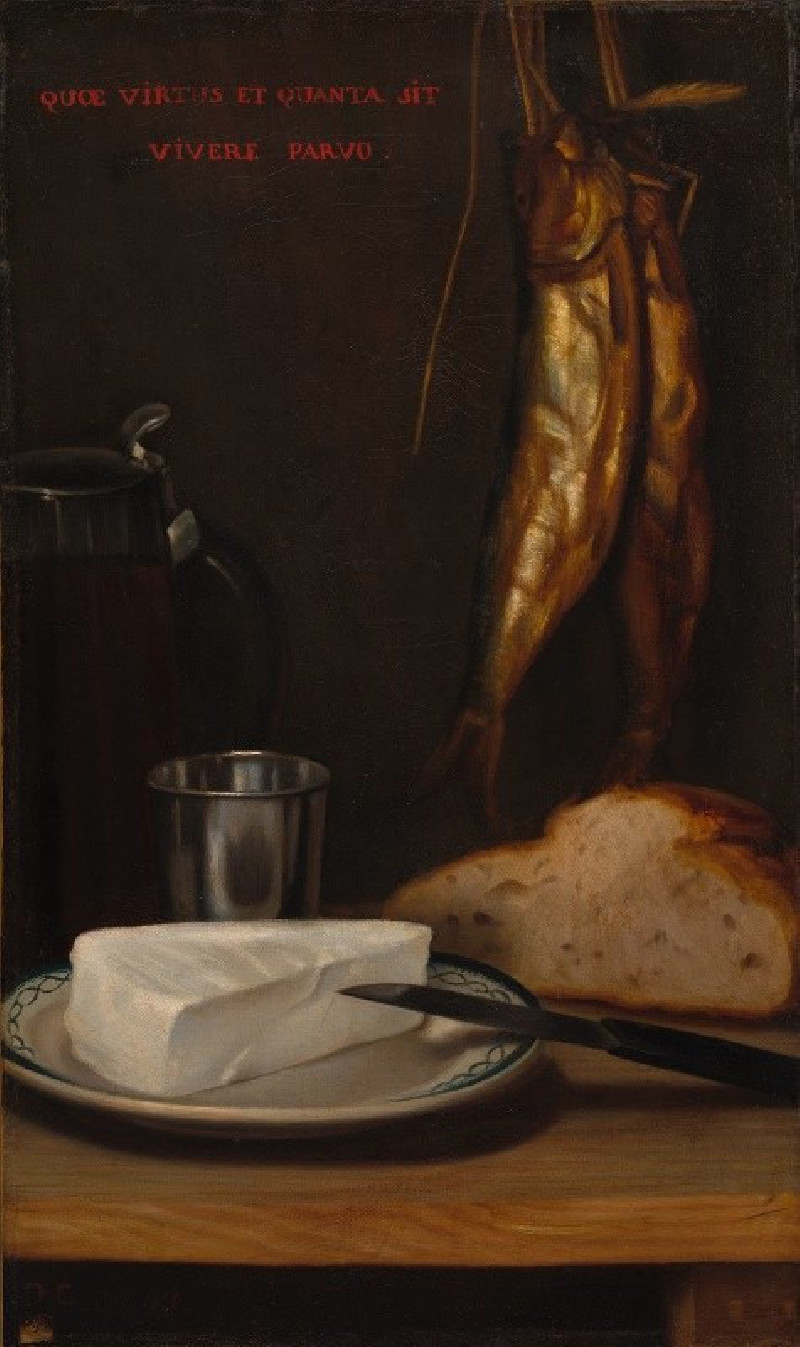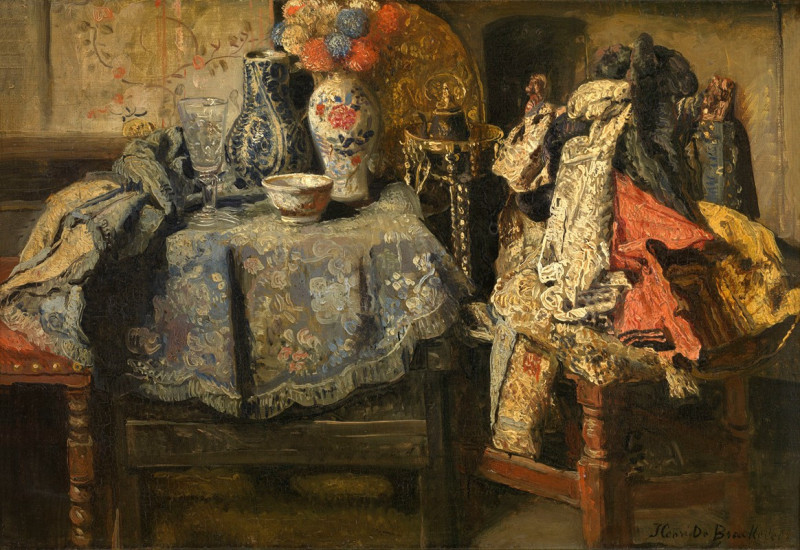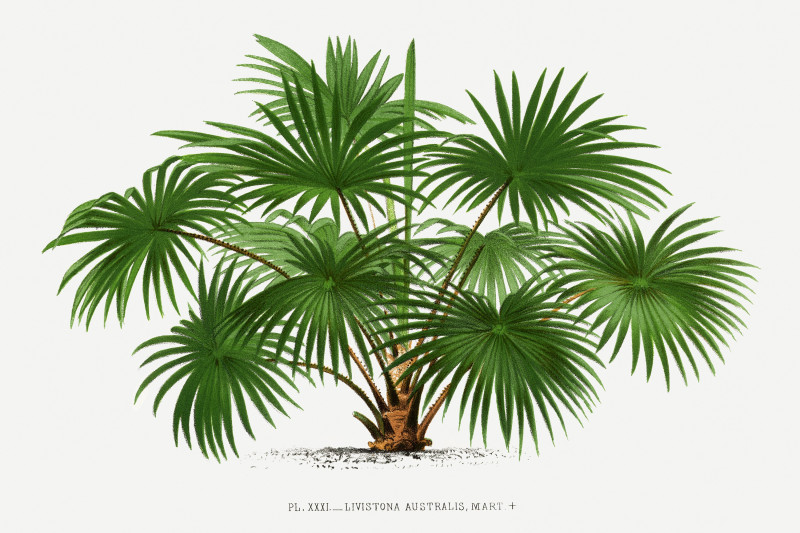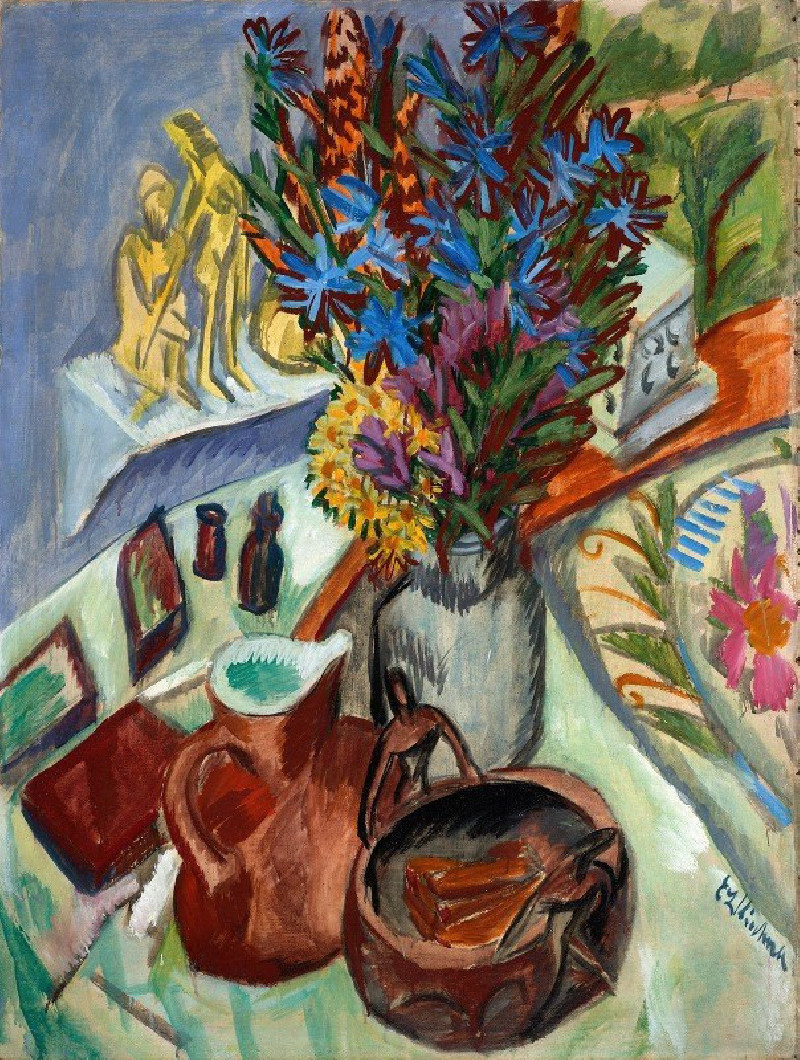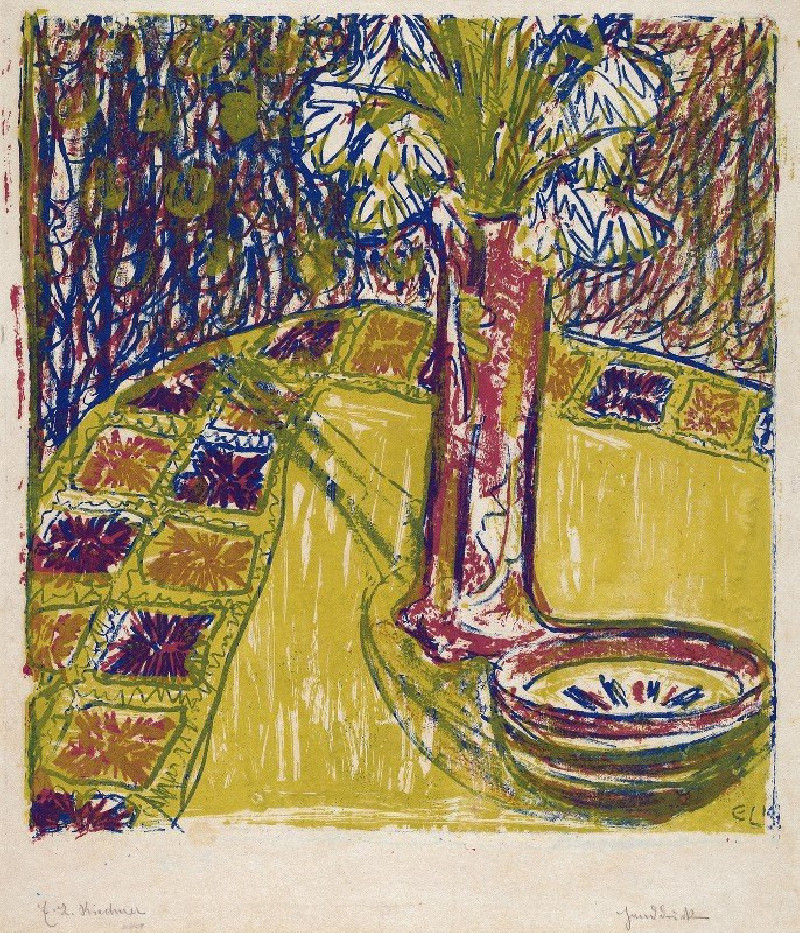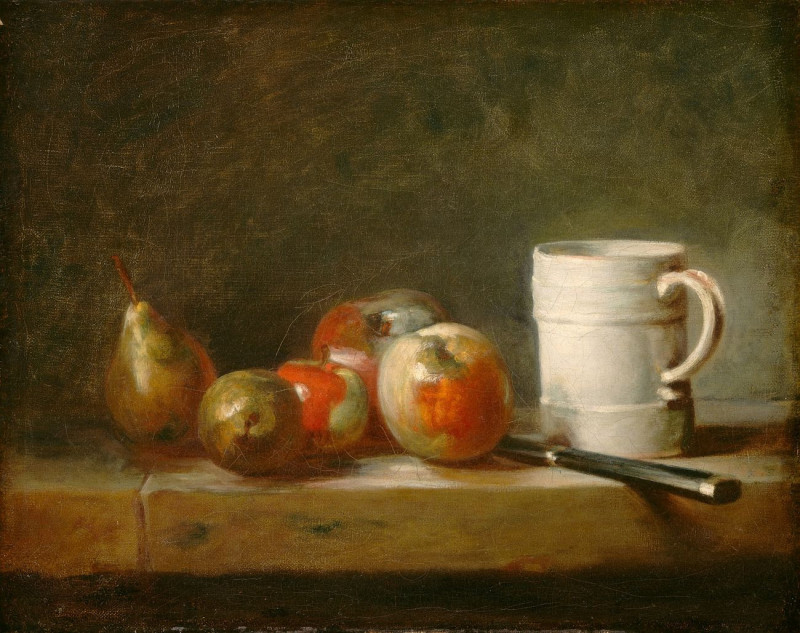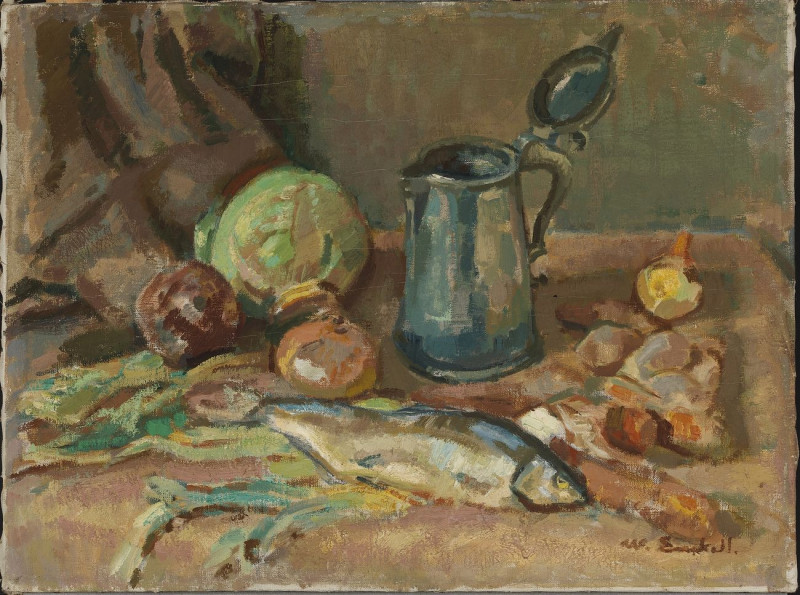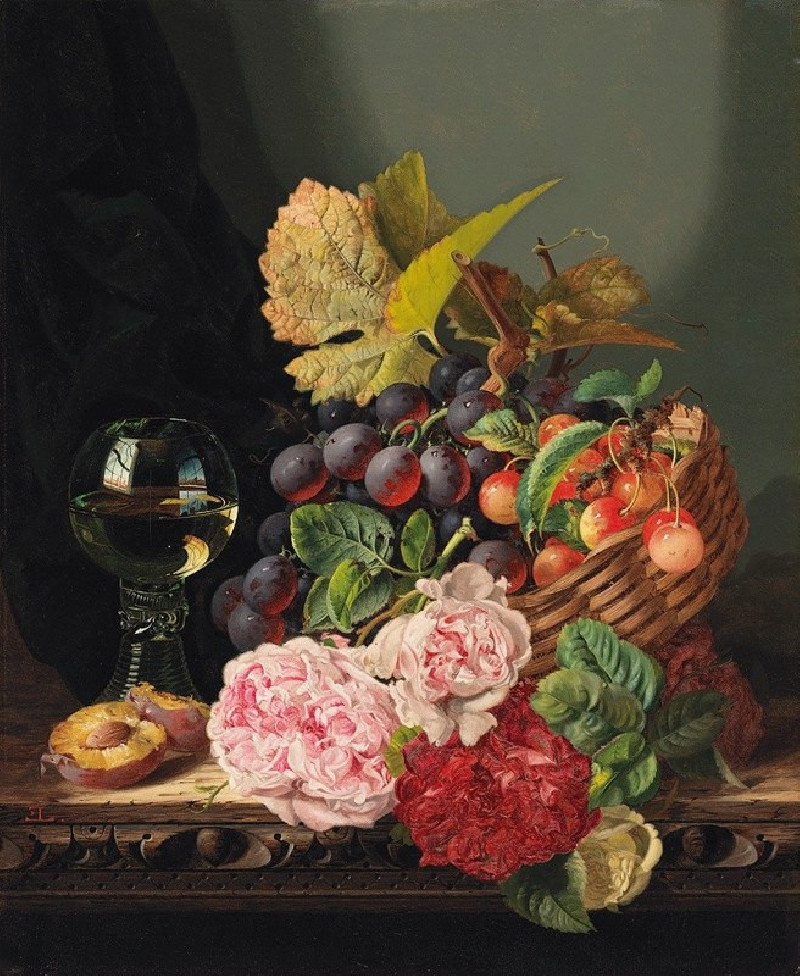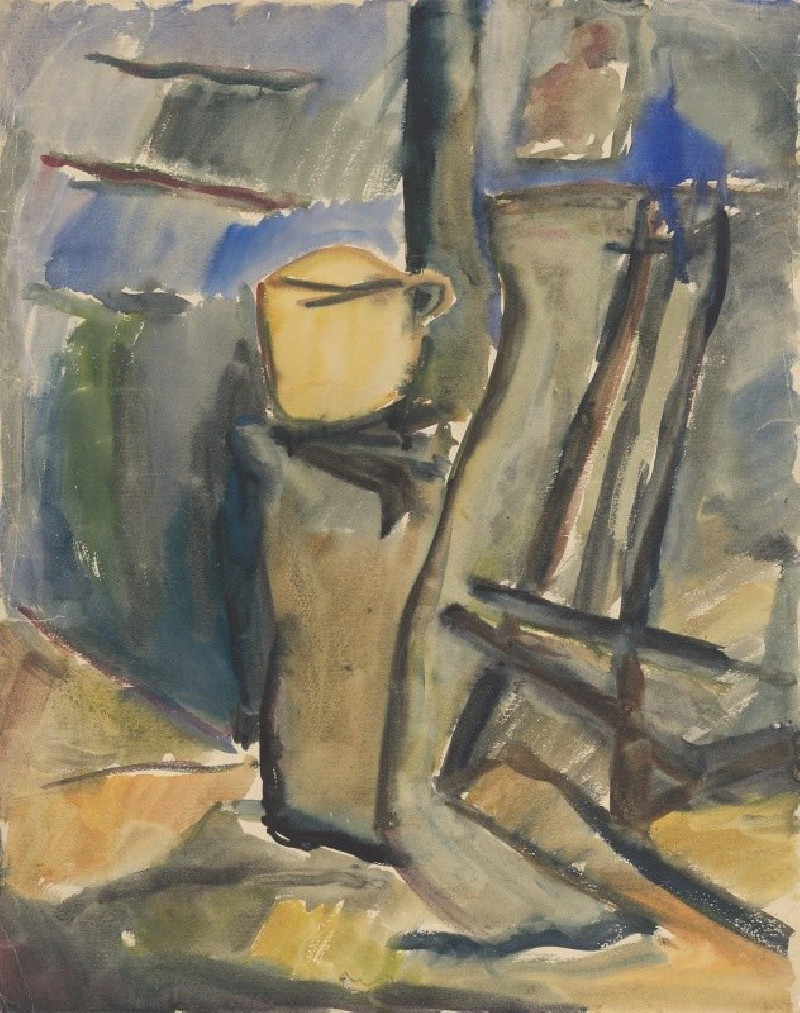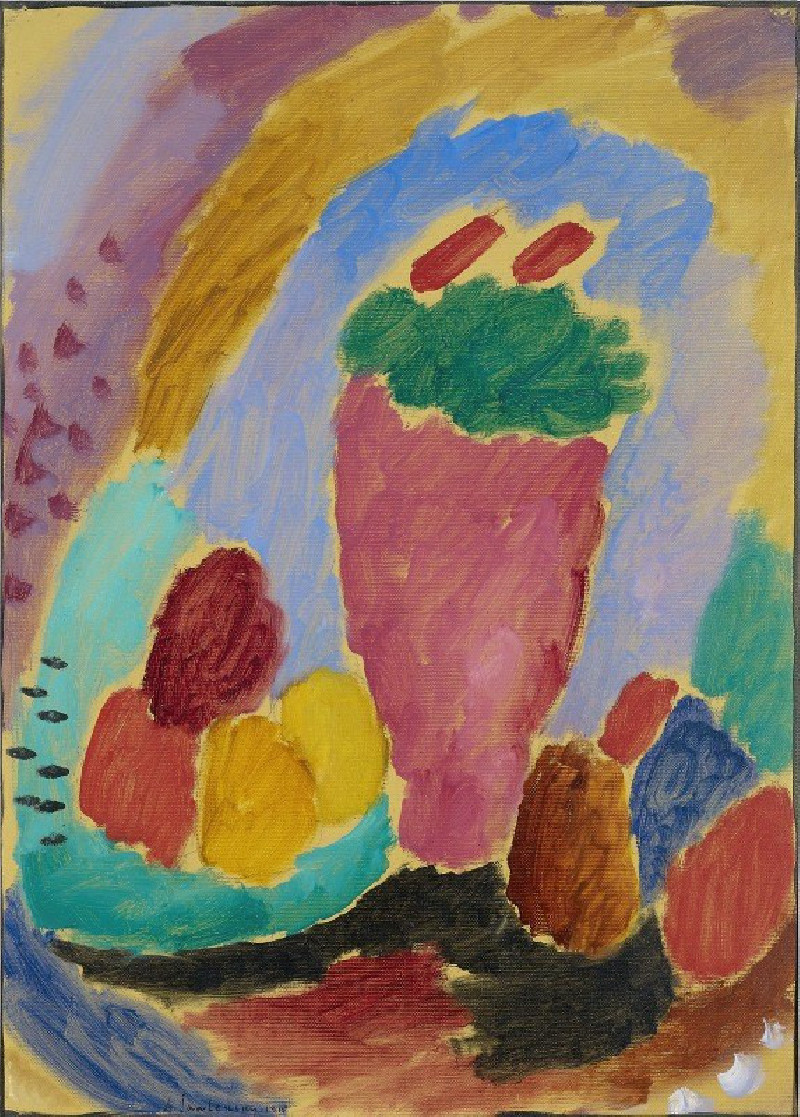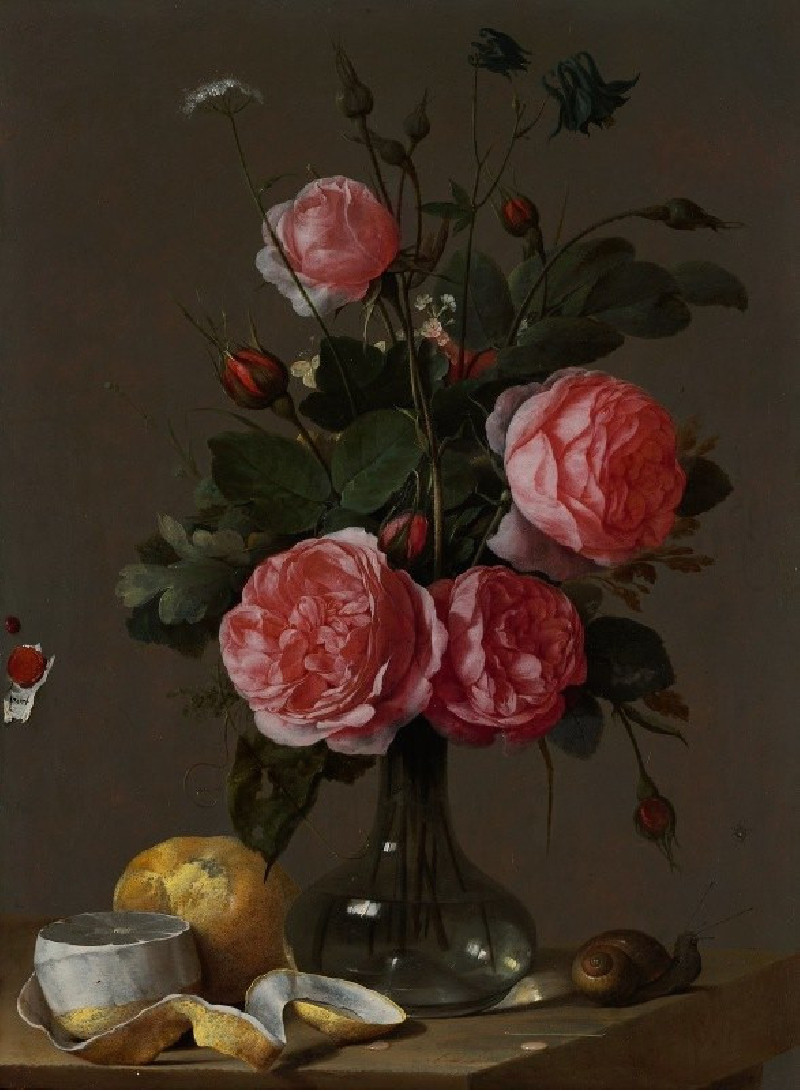Still Life (1936)
Technique: Giclée quality print
Recommended by our customers
More about this artwork
"Still Life" (1936), by Sasza Blonder, is a captivating exploration of everyday objects depicted through vivid and expressive brushstrokes. In this painting, Blonder artfully arranges an array of items on a surface that invites viewers into a cozy, yet dynamically colored space. The composition features an assortment of objects including books, a tray, several containers, and what appears to be a candle stick, each painted with a unique blend of colors that add vibrancy and depth to the scene.The use of thick, impasto-like applications of paint and rough outlines imbue the artwork with a palpable sense of texture and movement, while the choice of bright yellows, deep reds, and soothing blues demonstrates Blonder's skill in handling color to convey mood and atmosphere. The backdrop, with its sweeping strokes of muted reds and browns, provides a warm contrast to the lively colors used on the objects, giving the painting a rustic charm."Still Life" (1936) is not just a display of static objects but a testament to Blonder’s ability to transform the ordinary into the extraordinary through his bold and emotive approach to painting.
Delivery
Returns
Aleksander (Sasza) Blonder was a Polish painter of Jewish origin .
He went to Paris for the first time in 1926. He studied architecture in 1930–1932 at the École nationale supérieure des beaux-arts in Paris and studied painting at the Academy of Fine Arts in Kraków from 1932 to 1936 with Teodor Axentowicz , Władysław Jarocki and Fryderyk Pautsch.



